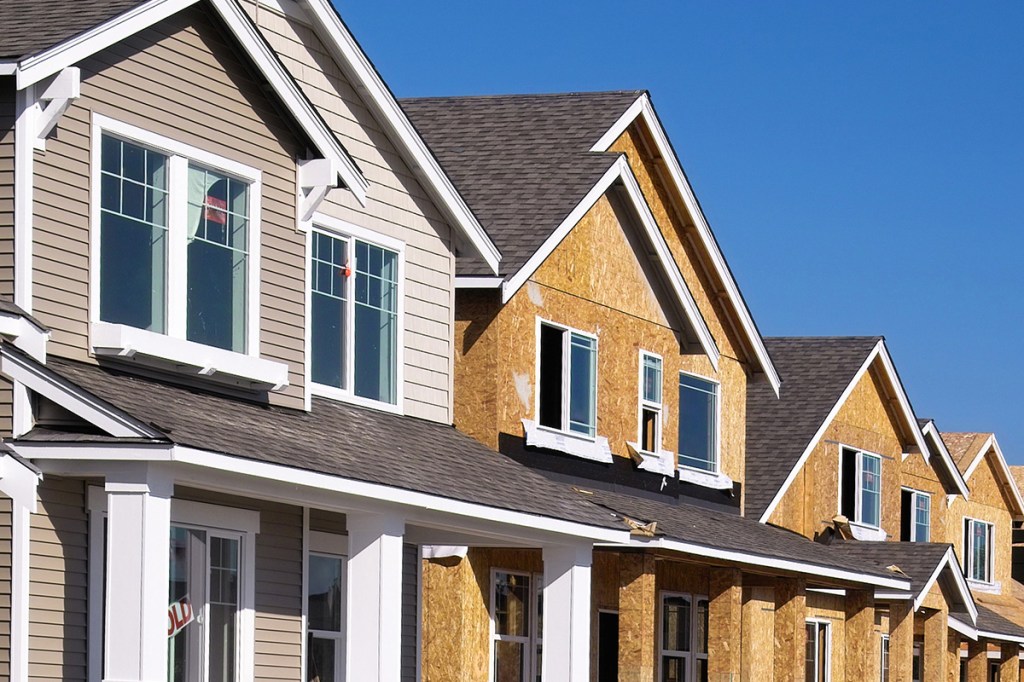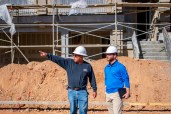As a merchandising manager at ABC Supply, Dean Whitcomb wears many hats for the benefit of his contractor customers. He’s a negotiator, analyst, marketer and educator.
We can also add trendspotter to the list.
Working closely with manufacturers means Whitcomb sees what’s coming down the pipeline before anyone else. One product category that particularly excites him is siding. Driven by technological advancements, environmental considerations and aesthetic preferences, siding materials are always evolving. Part of his role is to ensure the latest and greatest products are consistently available to meet demand.
“I identify and vet new siding products, ensure they meet our customer needs and create action plans to bring these products to market,” Whitcomb says. “It’s about driving growth for our customers and making sure we stay ahead of trends to provide the best solutions.”
We caught up with Whitcomb to learn what’s trending in siding.
Vinyl evolves: Once considered the budget-friendly option, vinyl siding has greatly improved in appearance while remaining affordable. “Vinyl siding has come a long way from its early days of limited colors and plastic-like appearance,” Whitcomb says. Modern vinyl siding offers various color options and realistic wood grain textures, including shake panels that mimic traditional wooden shingles. Advances in polymer technology make vinyl more durable and fade-resistant, even in dark colors, which were previously prone to UV damage and weathering.
Aluminum levels up: Where natural materials such as wood are susceptible to rot, aluminum holds up under even the muggiest conditions. That’s why aluminum siding is so popular in the Southeast. Thankfully, builders don’t need to sacrifice looks for staying power. These days, aluminum offers realistic textures and a wider range of colors. Similarly, steel is becoming popular as a siding solution for contemporary homes. “With finishes that can mimic wood grain, these materials offer an exotic and sophisticated look, while also providing superior resilience against the elements,” Whitcomb says.
Fiber cement diversifies: Fiber cement siding has become a staple across many regions due to its durability and wood-like look, but this material has broadened its aesthetic options to include more colors and textures to match specific design preferences. “Fiber cement siding has revolutionized the market by combining the aesthetic appeal of wood with the durability of cement,” Whitcomb says. “It offers a maintenance-free solution that resists pests and weathering, making it a popular choice across all regions.” Whether it’s the farmhouse look or a more contemporary appearance, you can find it in fiber cement. Plus, it’s available pre-finished from the factory, reducing labor costs and installation time.
Wood gets tough: Often imitated, never duplicated, wood is a mainstay for a reason: Few siding options can match its natural beauty and timeless appeal. But a natural material like wood is prone to longevity and maintenance issues. That’s why manufacturers have invested in innovative solutions such as water-repellent coatings, UV-resistant finishes and fire-retardant treatments. Similarly, engineered wood, combining natural wood fibers and advanced technology, is becoming a popular alternative. Offering more aesthetic versatility, a uniform finish (bye-bye knots) and advanced durability, engineered wood checks all the boxes. Being carbon-neutral and eco-friendly, thanks to sustainable forestry practices, makes this material the smart choice for the eco-conscious builder.
Get in the mix
To create a more visually striking façade, homebuilders are moving away from the monotony of using a single type of siding.
“Using combinations like vinyl, fiber cement and metal not only enhances the visual appeal but also takes advantage of the strengths of each material, providing both durability and aesthetic versatility,” Whitcomb says.
For example, stone veneer around the foundation provides a sense of solidity and permanence, while fiber cement or engineered wood can be used on the upper levels for its performance and ease of maintenance.
Whether aiming for a rustic, traditional look or a sleek, contemporary design, the strategic use of mixed siding materials offers endless possibilities for customization.
ABC Supply is the largest wholesale distributor of roofing and other select exterior and interior building products in North America. Learn about our unmatched service and business support to contractors and view their siding solutions here.



